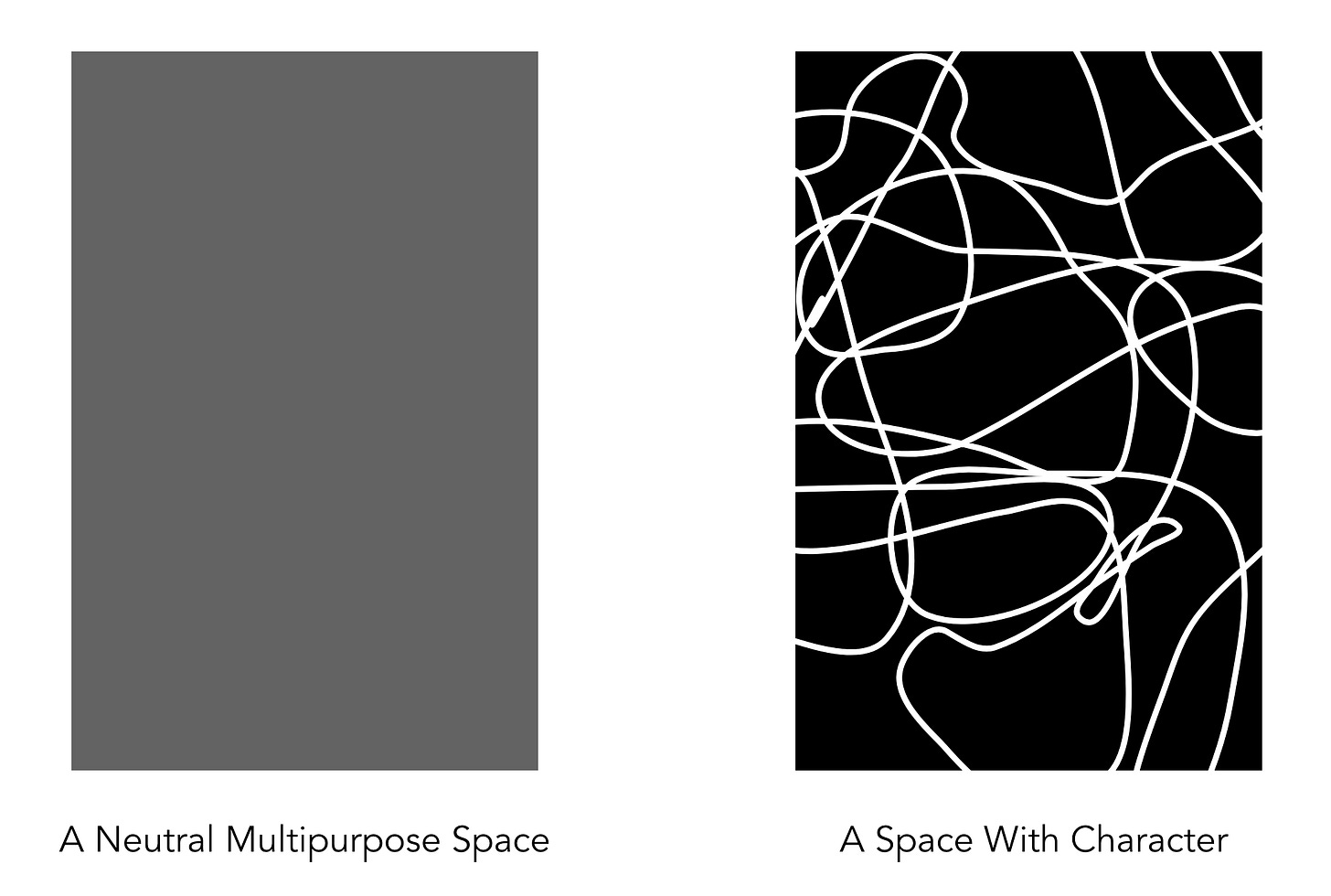One of my favorite songs is “Gotta Get Up” by Harry Nilsson. It begins,
“Gotta get up, gotta get out
Gotta get home before the mornin' comes,”
which is a little disorienting because I associate getting up with waking up in the morning. Here, Nilsson flips that idea over instead it’s him getting up somewhere, far from home, in the late hours of the night. Here, Nilsson is a little inside-out himself.
Another dimension involves Nilsson as a songwriter with his inner thoughts coming out into public view. A songwriter’s inner world is on display when confronted with an auditorium, a recording studio, or a stadium tour. How does the writer experience this transformation, this unraveling, in different spaces? How does the inner world transform when shared? What happens in these collective spaces during this transformation?
A little magic is involved, I think. It’s a combination of anxiety, excitement, and ego. One has to be a little crazy to share their music with the world—to let strangers into the corners of their mind. But it’s a little magical too when strangers come together in song and intimately know all the lyrics that resonate for them in unique ways.
I spoke with my friend Ryan who owns a little recording studio in St. Louis over the phone a while back. He told me about his space, the good and the bad, and helped me understand some technical aspects of sound recording. Recording studios generally come in two varieties: a neutral multipurpose space or a space with character.
Some nice studios have both. For example, at Electrical Audio in Chicago, their A Studio is a dead room, which falls into the first category as a clean and functional space. It is designed to produce the cleanest recording one can imagine. Their B Studio, however, is echo-y on purpose. The room itself gives the recording extra character via reverb and live sound. There are some records you can just tell were recorded at certain studios because the studio’s character imprints into the sound of the final recording.
At their most basic level, recording studios require a recording room and a control room. Ideally, a recording space has no parallel walls, and the ceiling height sits at 11’-15’. You need an equal amount of sound diffusion and sound absorption panels checker boarded throughout the space for a clean sound. Ryan told me you want “quantized randomness.” In a control room, symmetry and precision are king. He described the first reflection points and the 38% rule which theorizes the ideal location of the recording engineer’s chair.
Songs are either recorded where the whole band plays all together at once or instruments are tracked individually. In the former, there’s a concept called sound bleed where one instrument gets captured on another instrument’s microphone. For example, you could hear a faint stand-up bass line on the kick drum recording. This adds a layer of complexity to the translation and overall recording and mixing process.
Musicians emit sound waves and live and dead rooms try to manipulate and capture sound waves in completely different ways. How does this manipulation work to translate the musician’s inner world accurately? What gets lost in translation? How can these spaces improve this process?
I made a playlist that explores the themes I discussed in this issue: songwriters sharing their inner worlds, songs about space, songs teetering between two states of being. Give it a listen:





